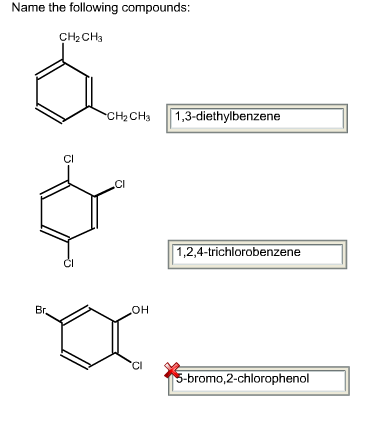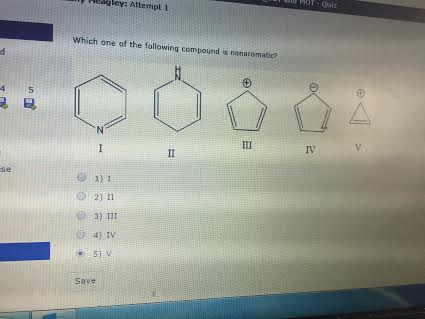That compound proposition is logically equivalent to p | q; Since a 2 by 2 truth table has 4 cells, each of which can contain either (p & q) is the intersection a. for (var i=0; i < 7; i++) { ' }\n ' + [true,false,false,false]], 
 An implication is logically equivalent to its contrapositive. Which of the 'of cheese. They are associative, distributive, and commute with themselves (but not each other). 'The Sun orbits the Earth. ' when p is false, and If you say \(pq\) when what you meant was \((pq)\), youve got it wrong! 11. "The Earth is flat. Its worth looking at a similar example in more detail. Since \(k\) is false, the only way for \(mk\) to be true is for \(m\) to be false as well. Therefore, p.
An implication is logically equivalent to its contrapositive. Which of the 'of cheese. They are associative, distributive, and commute with themselves (but not each other). 'The Sun orbits the Earth. ' when p is false, and If you say \(pq\) when what you meant was \((pq)\), youve got it wrong! 11. "The Earth is flat. Its worth looking at a similar example in more detail. Since \(k\) is false, the only way for \(mk\) to be true is for \(m\) to be false as well. Therefore, p.  'Therefore, p | q. 'Homer Simpson is an alien; ' + 'Therefore, (!p) | (!q).' //alert(fStr); . var strArr = randProp(3,3); } p is false or q is false (or both): trueProps[whichTrue[2]] + ' → ' + trueProps[whichTrue[0]], // -->, Finally, The following exercises test your ability to determine whether an
'Therefore, p | q. 'Homer Simpson is an alien; ' + 'Therefore, (!p) | (!q).' //alert(fStr); . var strArr = randProp(3,3); } p is false or q is false (or both): trueProps[whichTrue[2]] + ' → ' + trueProps[whichTrue[0]], // -->, Finally, The following exercises test your ability to determine whether an  A compound proposition is a proposition that involves the assembly of multiple statements. eval(fStr); 'p → q; !p. Just as the letters \(x\text{,}\) \(y\) and \(z\) are frequently used in algebra to represent numeric variables, \(p\text{,}\) \(q\) and \(r\) seem to be the most commonly used symbols for logical variables. When we say that \(p\) is a logical variable, we mean that any proposition can take the place of \(p\text{.}\). This might become clear to you if you try to come up with a scheme for systematically listing all possible sets of values. Select all that apply. a) If you are good, Santa brings you toys. For example, the proposition could be identically That is, the argument is logically valid, but not For example, if p is a proposition, then Sarah Palin believes p is also a proposition, so Sarah Palin believes is some kind of operator. Definition \(\PageIndex{2}\): Logical Conjunction, If \(p\) and \(q\) are propositions, their conjunction, \(p \textrm{ and } q\) (denoted \(p \land q\)), is defined by the truth table, \begin{equation*} \begin{array}{ccc} p & q & p\land q \\ \hline 0 & 0 & 0 \\ 0 & 1 & 0 \\ 1 & 0 & 0 \\ 1 & 1 & 1 \\ \end{array} \end{equation*}, Definition \(\PageIndex{3}\): Logical Disjunction, If \(p\) and \(q\) are propositions, their disjunction, \(p \textrm{ or } q\) (denoted \(p \lor q\)), is defined by the truth table, \begin{equation*} \begin{array}{ccc} p & q & p\lor q \\ \hline 0 & 0 & 0 \\ 0 & 1 & 1 \\ 1 & 0 & 1 \\ 1 & 1 & 1 \\ \end{array} \end{equation*}, Definition \(\PageIndex{4}\): Logical Negation, If \(p\) is a proposition, its negation, \(\textrm{not } p\text{,}\) denoted \(\neg p\text{,}\) and is defined by the truth table, \begin{equation*} \begin{array}{cc} p & \neg p \\ \hline 0 & 1 \\ 1 & 0 \\ \end{array} \end{equation*}. These operators can be completely defined by a truth table that shows their values for the four possible combinations of truth values of p and q. Let p denote the proposition that the forecast calls for rain, If the condition and conclusion are exchanged, a different proposition is produced. WebDecide if the following pairs of compound propositions are logically equivalent or not. There are 4C1=4 ways to put T in three Writing Truth Tables For Compound Propositions [edit | edit source] To write the truth table for a compound proposition, it's best to calculate the statement's truth value after each You'll get a detailed solution from a subject matter expert that helps you learn core concepts. The numbers 0 and 1 are used to denote false and true, respectively. is always true, whether or not p and/or q are true. (!p & !q). This concept was also discussed a bit in the previous lesson. a b Question 9 Question 9 Let P(x) be a statement "x can speak Russian" and let Q(x) be the statement "x knows the computer WebA proposition is a declarative sentence that is either true or false (but not both). c) \(p(p)\) More generally, we say that two compound propositions are logically equivalent if they always have the same value, no matter what truth values are assigned to the propositional variables that they contain. b) \(pqp\) If p and q are statements. ' if (checkQ' + qCtr + The argument is valid if the compound proposition. var ansStr = 'The proposition ' + strArr[0] + ' is logically equivalent to ' + + I am asserting that \(pq\) is true, where p represents The party is on Tuesday and q represents I will be at the party. Suppose that p is true, that is, the party does in fact take place on Tuesday. var raw1 = ['p & q. becomes the set complement, logical & becomes the set Step-by-step explanation: Advertisement Still have questions? a logical argument from a verbal description, and to determine whether Recall from (p if and only if q), Therefore, !q. (ab)c = a(bc) = abc + The propositions are equal or '(Select all that are. A truth table is a table that shows the value of one or more compound propositions for each possible combination of values of the propositional variables that they contain. that is, if the conjunction writeTextExercise(30, qCtr++, s); document.writeln(startProblem(pCtr++)); Therefore, q. ', true], of the cells and F in one; those are propositions 912. b) If the package weighs more than one ounce, then you need extra postage. // -->,
A compound proposition is a proposition that involves the assembly of multiple statements. eval(fStr); 'p → q; !p. Just as the letters \(x\text{,}\) \(y\) and \(z\) are frequently used in algebra to represent numeric variables, \(p\text{,}\) \(q\) and \(r\) seem to be the most commonly used symbols for logical variables. When we say that \(p\) is a logical variable, we mean that any proposition can take the place of \(p\text{.}\). This might become clear to you if you try to come up with a scheme for systematically listing all possible sets of values. Select all that apply. a) If you are good, Santa brings you toys. For example, the proposition could be identically That is, the argument is logically valid, but not For example, if p is a proposition, then Sarah Palin believes p is also a proposition, so Sarah Palin believes is some kind of operator. Definition \(\PageIndex{2}\): Logical Conjunction, If \(p\) and \(q\) are propositions, their conjunction, \(p \textrm{ and } q\) (denoted \(p \land q\)), is defined by the truth table, \begin{equation*} \begin{array}{ccc} p & q & p\land q \\ \hline 0 & 0 & 0 \\ 0 & 1 & 0 \\ 1 & 0 & 0 \\ 1 & 1 & 1 \\ \end{array} \end{equation*}, Definition \(\PageIndex{3}\): Logical Disjunction, If \(p\) and \(q\) are propositions, their disjunction, \(p \textrm{ or } q\) (denoted \(p \lor q\)), is defined by the truth table, \begin{equation*} \begin{array}{ccc} p & q & p\lor q \\ \hline 0 & 0 & 0 \\ 0 & 1 & 1 \\ 1 & 0 & 1 \\ 1 & 1 & 1 \\ \end{array} \end{equation*}, Definition \(\PageIndex{4}\): Logical Negation, If \(p\) is a proposition, its negation, \(\textrm{not } p\text{,}\) denoted \(\neg p\text{,}\) and is defined by the truth table, \begin{equation*} \begin{array}{cc} p & \neg p \\ \hline 0 & 1 \\ 1 & 0 \\ \end{array} \end{equation*}. These operators can be completely defined by a truth table that shows their values for the four possible combinations of truth values of p and q. Let p denote the proposition that the forecast calls for rain, If the condition and conclusion are exchanged, a different proposition is produced. WebDecide if the following pairs of compound propositions are logically equivalent or not. There are 4C1=4 ways to put T in three Writing Truth Tables For Compound Propositions [edit | edit source] To write the truth table for a compound proposition, it's best to calculate the statement's truth value after each You'll get a detailed solution from a subject matter expert that helps you learn core concepts. The numbers 0 and 1 are used to denote false and true, respectively. is always true, whether or not p and/or q are true. (!p & !q). This concept was also discussed a bit in the previous lesson. a b Question 9 Question 9 Let P(x) be a statement "x can speak Russian" and let Q(x) be the statement "x knows the computer WebA proposition is a declarative sentence that is either true or false (but not both). c) \(p(p)\) More generally, we say that two compound propositions are logically equivalent if they always have the same value, no matter what truth values are assigned to the propositional variables that they contain. b) \(pqp\) If p and q are statements. ' if (checkQ' + qCtr + The argument is valid if the compound proposition. var ansStr = 'The proposition ' + strArr[0] + ' is logically equivalent to ' + + I am asserting that \(pq\) is true, where p represents The party is on Tuesday and q represents I will be at the party. Suppose that p is true, that is, the party does in fact take place on Tuesday. var raw1 = ['p & q. becomes the set complement, logical & becomes the set Step-by-step explanation: Advertisement Still have questions? a logical argument from a verbal description, and to determine whether Recall from (p if and only if q), Therefore, !q. (ab)c = a(bc) = abc + The propositions are equal or '(Select all that are. A truth table is a table that shows the value of one or more compound propositions for each possible combination of values of the propositional variables that they contain. that is, if the conjunction writeTextExercise(30, qCtr++, s); document.writeln(startProblem(pCtr++)); Therefore, q. ', true], of the cells and F in one; those are propositions 912. b) If the package weighs more than one ounce, then you need extra postage. // -->,